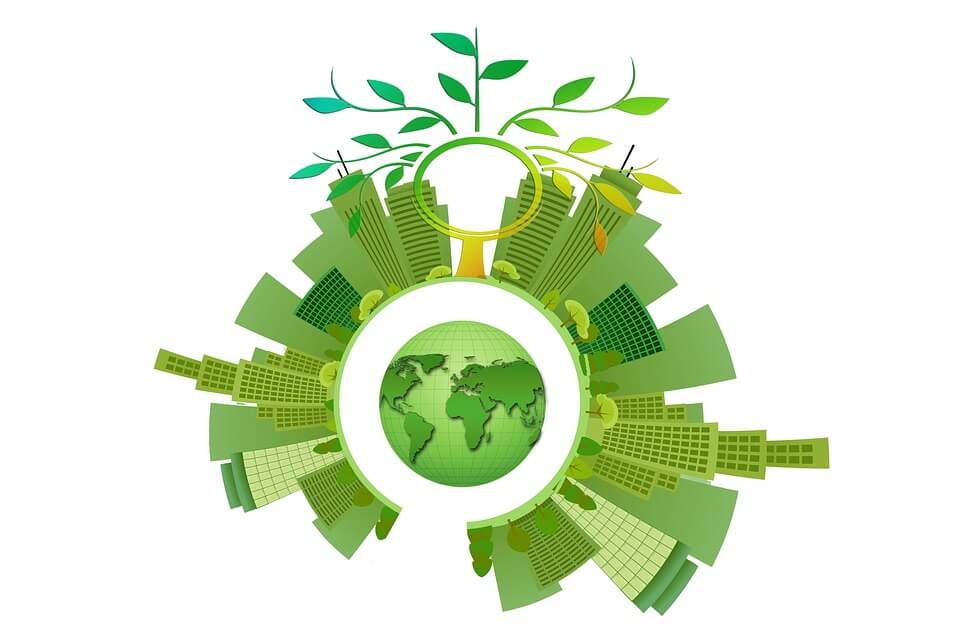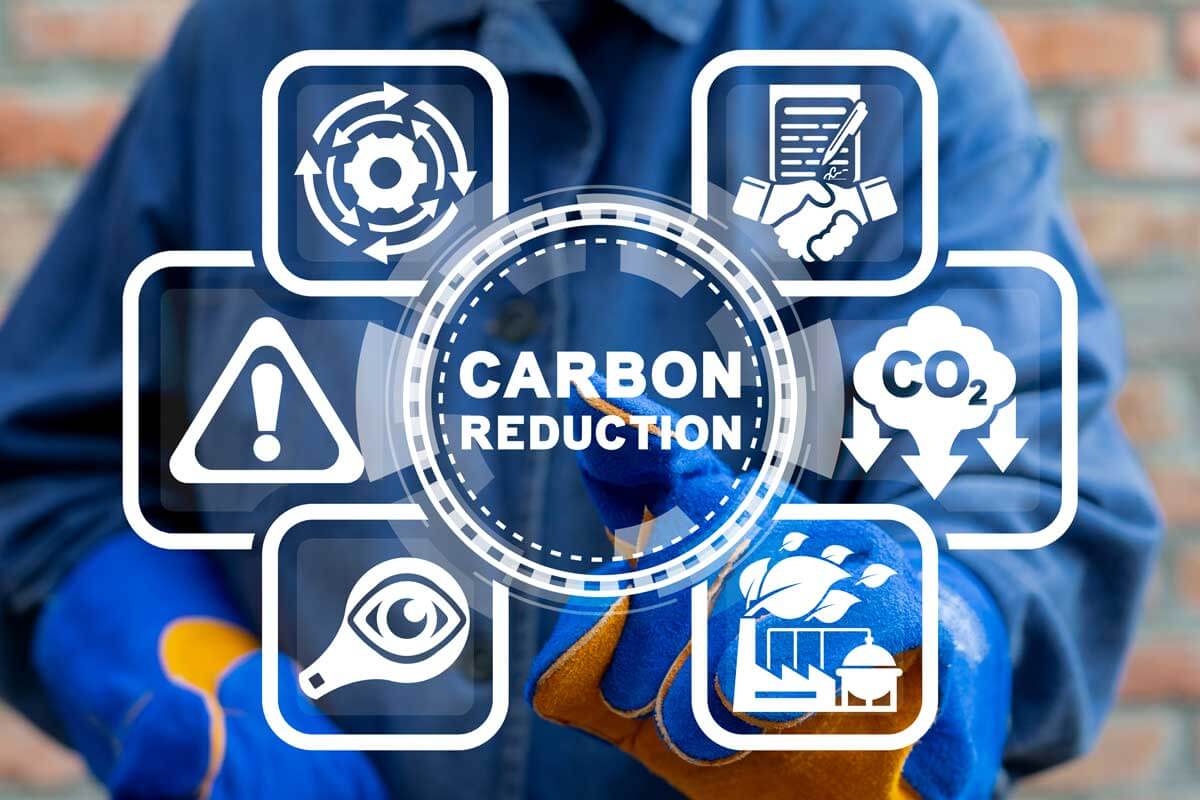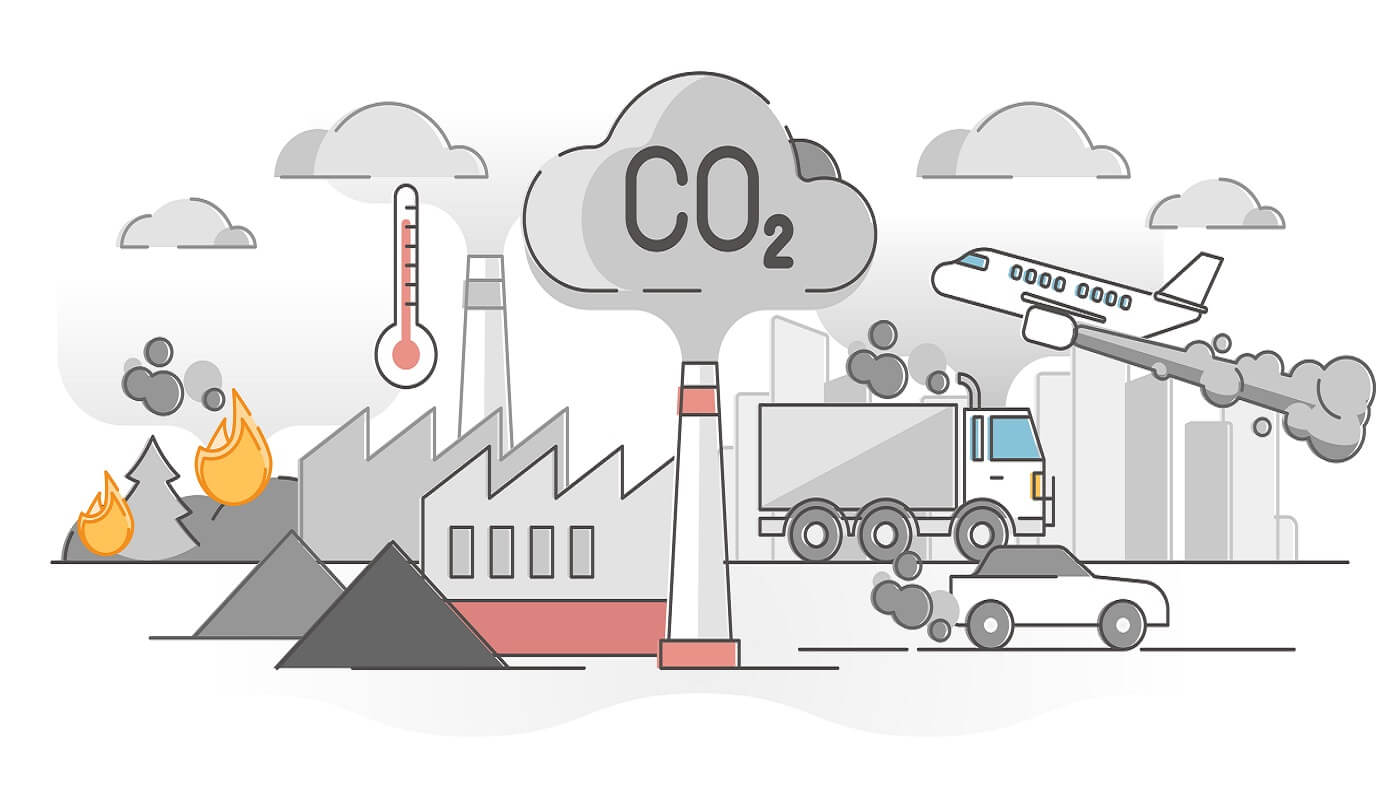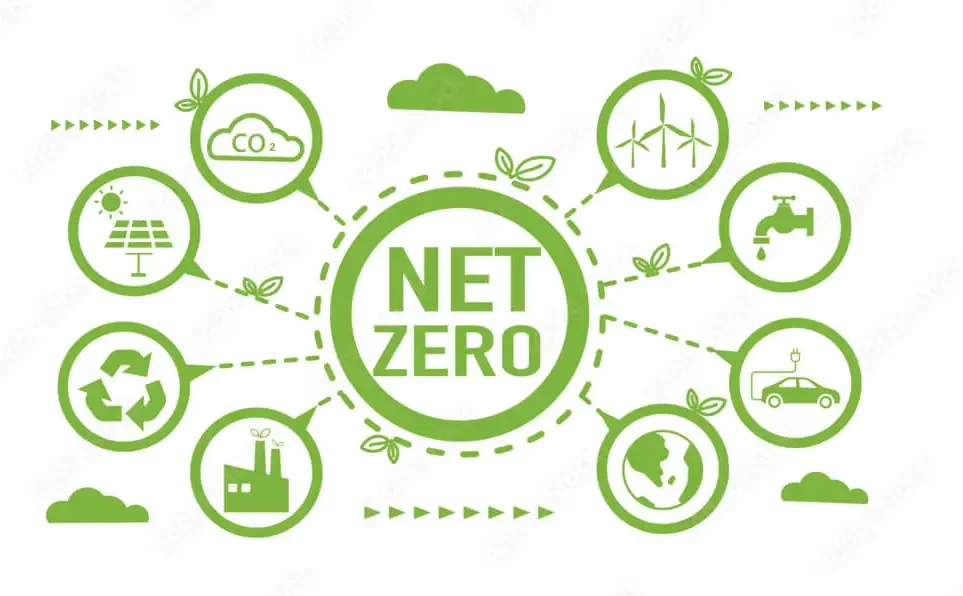Powerful and Sustainable Strategies to Reduce Your Carbon Footprint

In a world increasingly aware of climate change, the need to reduce our carbon footprint has become pressing.
Human activities such as contribute significantly to the emission of greenhouse gasses, which accelerate global warming such as:
- The burning of fossil fuels
- Deforestation
Concern for the environment, sustainability and the future of our planet drives us to take concrete action.
However, it can be overwhelming for many without proper guidance.
In this article you will learn about effective and sustainable strategies to reduce your carbon footprint the following:
- Discover simple practices you can incorporate into your daily life, from choosing more environmentally friendly transportation to reducing waste.
- We will also explore how these actions not only benefit the planet, but also your personal economy.
- Knowledge you need to take concrete action and contribute to a more sustainable future for all.
Understanding Carbon Footprint
Assessing and addressing our impact on the environment is fundamentally tied to the concept of the carbon footprint.
This term refers to the total emissions of greenhouse gasses, primarily carbon dioxide (CO2), directly or indirectly produced by individuals, organizations, or products.
Carbon footprint analysis, as elucidated by Finance Strategists, serves as a tool to quantify greenhouse gas emissions.
This analysis takes various factors into account such as:
- Energy consumption
- Transportation
- Waste production
- Natural resource utilization
Significance of Reducing Carbon Footprint
Diminishing our carbon footprint is crucial for preserving our planet and ensuring the well-being of future generations.
Excessive emissions of greenhouse gasses, primarily from burning fossil fuels, contribute substantially to global warming and climate change.
These changes result in:
- Increased temperatures
- Extreme weather events
- Rising sea levels
- Disruptions in ecosystems
This involves reducing our reliance on fossil fuels, adopting sustainable practices, and supporting renewable energy sources.
Through collective efforts and individual actions, a substantial difference can be made, creating a more sustainable and resilient future.
To effectively diminish our carbon footprint, it is essential to explore various strategies and initiatives.
In the subsequent sections, we will delve into different actionable steps that
- Individuals
- Organizations
- Communities
Sustainable Investing and its Impact
Sustainable investing transcends mere financial gains by considering factors in investment decisions (ESG)
- Environmental
- Social
- Governance
This approach aims to generate long-term financial returns while also fostering positive societal impact and promoting sustainability.
Sustainable investing aligns seamlessly with the objective of reducing the carbon footprint and addressing climate change.
According to Finance Strategists, sustainable investing has gained considerable traction in recent years.
By channeling capital towards companies prioritizing sustainability practices and demonstrating a commitment to reducing carbon emissions.
Investors play a pivotal role in transitioning to a low-carbon economy.
Benefits of Sustainable Investing
Sustainable investing yields both financial and non-financial advantages. Here are some key benefits:
- Long-term Value Creation: Sustainable investing focuses on companies poised for the future.
By considering ESG factors, investors can identify companies with robust governance practices, effective risk management, and innovative solutions to environmental challenges.
This approach fosters long-term value creation and resilience in the face of market fluctuations. - Risk Mitigation: Companies proficient in managing environmental and social risks are better equipped to mitigate potential regulatory, reputational, and operational risks.
Sustainable investing empowers investors to pinpoint and avoid companies that might face substantial liabilities related to environmental harm. - Positive Societal Impact: Sustainable investing provides an avenue to align investment decisions with personal values and contribute to positive societal change.
By supporting companies prioritizing sustainability, investors facilitate change toward a more sustainable and equitable world.
Advantage | Description |
Long-term value creation | Focus on future-proof companies. |
Consideration of ESG factors to identify companies with strong governance practices, effective risk management and innovative solutions to environmental challenges. | |
Promotes long-term value creation and resilience to market fluctuations. | |
Risk mitigation | Companies proficient in environmental and social risk management are better equipped to mitigate regulatory, reputational and operational risks. |
Sustainable investing helps to identify and avoid companies that could face substantial liabilities related to environmental damage. | |
Positive social impact | Aligns investment decisions with personal values. |
Contributes to positive social change by supporting companies that prioritize sustainability. | |
Facilitates change towards a more sustainable and equitable world. |
Role of ESG Reporting
Corporate sustainability and ESG reporting are instrumental in sustainable investing.
These reports offer transparency and accountability, enabling investors to evaluate a company’s environmental and social performance.
ESG reports delineate a company’s efforts in:
- Reducing its carbon footprint
- Managing climate-related risks
- Promoting diversity and inclusion
- Upholding ethical business practices
As underscored by Finance Strategists, corporate sustainability and ESG reporting are increasingly vital for companies seeking investors and maintaining a positive reputation.
In the forthcoming sections, we will explore practical strategies that individuals and organizations can adopt to effectively reduce their carbon footprint and contribute to a more sustainable future.
Through these reports, companies can showcase their dedication to:
- Reducing carbon emissions
- Implementing sustainable practices
- Aligning with global sustainability goals
Corporate Sustainability and ESG Reporting
Corporate sustainability and ESG reporting are crucial elements of responsible business practices, embodying the growing recognition of the need to address environmental and social concerns.
Companies are increasingly adopting sustainable strategies and sharing pertinent information with stakeholders.
This section explores the escalating significance of corporate sustainability and ESG reporting.
- Corporate Sustainability: Integrating environmental, social, and governance considerations into business operations is the essence of corporate sustainability.
Sustainable practices not only benefit the environment but also enhance financial performance and reputation.
Prioritizing sustainability enables companies to minimize their
-Environmental impact
-Embrace social responsibility
-Bolster their long-term viability - ESG Reporting: ESG reporting involves communicating a company’s environmental, social, and governance performance to stakeholders.
These reports provide transparency and accountability, enabling them to evaluate a company’s sustainability efforts.
-Investors
-Customers
-Employees
-Communities
Metrics and disclosures related to:
-Carbon emissions
-Energy usage
-Employee diversity
-Community engagement
-Ethical governance practices
Practical Strategies to Reduce Carbon Footprint
Reducing our carbon footprint is a collective responsibility requiring individual and community-level action.
Implementing sustainable practices across various aspects of our lives significantly impacts carbon emissions.
This section explores practical strategies for individuals and communities to effectively diminish their carbon footprint.
Energy Conservation
- Unplug devices when not in use: Reduce unnecessary energy consumption by unplugging chargers, appliances, and electronics.
- Switch to energy-efficient appliances: Opt for LED light bulbs, energy-star rated electronics, and smart thermostats to lower energy usage.
- Optimize heating and cooling: Proper insulation and mindful thermostat use significantly reduce energy consumption.
Sustainable Transportation
- Reduce car usage: Promote alternatives like carpooling, public transportation, biking, or walking to reduce emissions and encourage healthier lifestyles.
- Choose fuel-efficient vehicles: Opt for fuel-efficient or electric vehicles to contribute to a greener transportation system.
- Plan efficiently: Combine trips to minimize unnecessary carbon emissions.
Waste Reduction and Recycling
- Practice the 3Rs: Reduce, Reuse, Recycle: Minimize waste generation and recycle materials such as paper, plastic, glass, and metal.
- Compost organic waste: Composting reduces methane emissions from landfills and enriches soil for gardening.
- Avoid single-use plastics: Use reusable alternatives like bags, water bottles, and utensils to reduce pollution.
Sustainable Consumption and Food Choices
- Buy local and organic: Support local farmers and reduce transportation-related carbon emissions by choosing locally grown produce. Opt for organic products to minimize pesticide and fertilizer use.
- Reduce meat consumption: Cut down on meat consumption or incorporate more plant-based meals into your diet to reduce greenhouse gas emissions.
- Avoid food waste: Plan meals, store food properly, and repurpose leftovers to minimize methane emissions from landfills.
Community Engagement and Advocacy
Creating a sustainable future necessitates collective action and community engagement.
By advocating for sustainable practices and encouraging others to join the movement, we can amplify our impact and drive positive change.
This section emphasizes the importance of community engagement and provides actionable steps to promote sustainability within our communities.
Raise Awareness
- Educate others: Spread awareness about the importance of reducing carbon footprint through social media, workshops, and collaborations with local schools and organizations.
- Engage in conversations: Initiate discussions about sustainability, its benefits, and encourage others to take action.
Promote Sustainable Initiatives
- Support local sustainability efforts: Participate in environmental organizations, community gardens, or clean-up initiatives to promote sustainable practices.
- Advocate for renewable energy: Collaborate with local entities to explore renewable energy options, fostering a more sustainable energy infrastructure.
Engage in Sustainable Transportation Initiatives
- Advocate for infrastructure: Support the development of bike lanes, sidewalks, and other pedestrian-friendly structures to reduce car usage and lower carbon emissions.
- Enhance public transportation: Collaborate with local authorities to improve public transportation options, reducing the number of cars on the road and lowering emissions.
Foster Community Collaboration
- Organize sustainable events: Plan eco-fairs, tree planting initiatives, or community clean-up days to foster community bonds and encourage collective action.
- Establish community gardens: Create communal spaces for sustainable, local food production, offering education and opportunities for community involvement.
Support Sustainable Policies
- Advocate for change: Stay informed about local and national sustainability policies, and voice support through letters, petitions, and peaceful demonstrations.
- Vote for sustainability: Choose candidates prioritizing environmental sustainability and climate action, influencing policy decisions for a greener future.
Taking Action for a Sustainable Future
Having explored diverse strategies to reduce our carbon footprint, it’s pivotal to translate this knowledge into action in our daily lives.
Let’s delve into how we can transform knowledge into actionable steps.
Set Goals and Track Progress
- Define specific sustainability goals: Identify clear objectives aligned with your values, such as reducing energy consumption or promoting sustainable policies.
Well-defined goals offer direction and motivation. - Monitor progress: Regularly assess your advancement toward these goals. Utilize journals, apps, or spreadsheets to track energy usage, waste reduction, or sustainable transportation choices.
Celebrate achievements and make necessary adjustments.
Inspire Others
- Lead by example: Demonstrate the positive impact of sustainable practices through your actions.
Your commitment can inspire others to follow suit. - Share success stories: Communicate personal experiences and success stories stemming from sustainable choices.
Whether it’s saving on energy bills, enhancing health, or fostering community, these narratives motivate others to embrace sustainability.
Stay Informed and Engaged
- Continuous learning: Stay updated with the latest sustainability research, news, and innovations.
Read books, follow sustainable blogs, and subscribe to reputable newsletters to expand your knowledge. - Join sustainability communities: Engage with like-minded individuals in online or offline sustainability communities.
Participate in discussions, share ideas, and learn from others’ experiences.
Take Advantage of Technology
- Utilize sustainable apps: Explore eco-friendly apps that facilitate sustainable choices.
These range from carbon footprint trackers to resources on sustainable products and services, enhancing your sustainability journey. - Invest in smart home technology: Incorporate smart home devices like thermostats, lighting systems, and energy monitors to optimize energy usage.
Spread the Message
- Social media advocacy: Leverage social media platforms to raise awareness about sustainability.
Share tips, facts, and resources, encouraging others to join the movement. Use hashtags like #SustainableLiving, #ClimateAction, or #GoGreen. - Promote our content: Invite friends, family, and followers to explore our website for insightful articles, tips, and resources on sustainability.
Conclusion
- Understand your carbon footprint: Learn how to quantify your carbon emissions, considering your energy, transportation, waste and lifestyle.
- Adopt sustainable practices: Make changes in your daily life, such as conserving energy, using eco-friendly transportation, reducing waste, and choosing organic food and products.
- Engage with your community: Promote sustainable practices in your local area by supporting business sustainability, public transportation and community collaboration.
- Stay informed and spread the word: Continue to learn about sustainability, share your experience and encourage others to join the movement on social media and in your community.
- Set goals and follow up: Set clear objectives and regularly track your progress.
This will help you stay focused on your efforts to reduce your carbon footprint and celebrate your achievements.
- Inspire others: Share your experiences and the benefits of sustainable practices with friends, family and followers.
Your example can motivate others to take action and be part of the shift to a more sustainable world.
FAQs
Who can benefit from implementing strategies to reduce their carbon footprint?
Individuals, organizations, and businesses can all benefit from adopting sustainable practices.
What are some effective strategies to reduce carbon footprint?
Conserving energy, promoting recycling, using sustainable transportation, and supporting renewable energy sources.
How can I incorporate sustainable practices into my daily life?
Start by reducing energy consumption, minimizing waste, choosing eco-friendly products, and embracing sustainable transportation options.
What if I think reducing my carbon footprint will be too expensive or inconvenient?
While some sustainable choices may require initial investment, many can actually save money in the long run. Small changes can also make a significant impact.
How can businesses implement carbon footprint reduction strategies?
Businesses can conduct carbon footprint analyses, implement energy-efficient practices, adopt sustainable supply chains, and engage in corporate sustainability reporting.
What if I feel overwhelmed and don’t know where to start?
Start small by focusing on one area, such as energy conservation or waste reduction. Gradually incorporate additional strategies as you become more comfortable.
What causes carbon footprint? From everyday activities to industrial impacts, learn how to mitigate your environmental footprint effectively."
Understand carbon footprint units like CO2e and kilograms to measure and reduce your environmental impact effectively.
Explore the different carbon footprint types—direct, indirect, embodied, and product—and learn strategies to reduce your environmental impact effectively.
Learn how to reduce your personal carbon footprint with practical strategies on energy, transportation, diet, and waste. Make a sustainable impact today.
Discover practical tips on reducing your water carbon footprint. Learn about water-saving strategies and their impact on climate change in this enlightening guide.
Offset your carbon footprint effectively with expert guidance. Understand the impact of your daily activities on emissions, calculate your footprint accurately, and support reputable offset projects.
Learn practical ways to reduce your carbon footprint & fight climate change. From energy conservation to sustainable transportation & eco-friendly diets, take steps for a greener future!
Ecuador's Zero Carbon Programme is a testament to the country's commitment to sustainability, setting a global example. This guide highlights the program's strategies, benefits, and how businesses can align with these green initiatives.
Discover the importance of Carbon Reporting in our analysis of Carbon accounting. Learn how to communicate your sustainability efforts clearly and transparently. Read more
Global Net Zero Programs leading the charge towards sustainability. From Latin America's innovative policies to the EU's Green Deal, this guide illuminates the path to a greener future for businesses, policymakers, and individuals.
Discover how to measure your financial portfolio's carbon footprint and take steps towards a sustainable future. Essential guide for environmentally conscious investors.
Colombia's Carbon Neutral National Program is a beacon for sustainable transformation, blending ambitious goals with actionable strategies. This guide delves into its impact on businesses and society, showcasing the path to a greener future.











